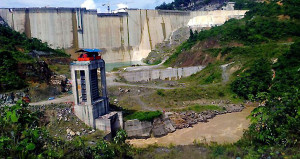(An abandoned mega-dam site along the Baram river. Pic: Supplied.)
SARAWAK’S controversial mega-dams project is officially dead – ending a three-year battle to stop developmental aggression.
The Sarawak state government has finally bowed to pressure from local communities who have been protesting against the construction of 12 mega-dams along the Baram river in the Malaysian province of Borneo.
The Sarawak State Attorney-General’s chambers wrote Harrison Ngau, legal counsel of the affected communities, informing him that the expropriation of the native customary rights land for the dam site and the reservoir had been officially revoked. This officially ends the plans that would have flooded 412 square kilometers of rainforests and displaced up to 20,000 indigenous people.
The Baram dam project was designed under Sarawak’s former Chief Minister and current Governor Taib Mahmud, and aggressively promoted by energy supplier Sarawak Energy as part of a multi-billion dollar hydropower scheme.
The Bruno Manser Fund (BMF) welcomed this development and congratulated the people of Baram for the victory, a result of the sustained peaceful resistance by the affected Kenyah, Penan and Kayan communities.
The BMF expects that the cancellation of the project will trigger a review of all mega dam projects in Sarawak and calls for an alternative energy plan, based on mini-grids with micro-hydro, solar and biomass at the core.
Australian greens celebrates win
Australian environmentalist Bob Brown hailed the development as one of the biggest global environmental wins since the Franklin Dam in Tasmania.
“This is a rare but very significant victory for the indigenous people of Sarawak’s Baram River,” Brown said.
The revocation of the dam projects is a major victory for the indigenous people of the region. Sarawak indigenous people have had their right to their lands reinstated and can enter and use their land legally. The protests against the Baram dam has run for more than five years. Blockades were established on the October 23, 2013.
“I travelled up the Baram river in 1990 and returned to Sarawak in 2013 to address a congress of indigenous people who live on the upper reaches of Sarawak’s rivers. After showing a film about the Franklin River blockade, I told the crowd they had a right to protest and could turn things around,” Bob Brown said.
“I continued to campaign in Australia, along with many other people, to highlight the involvement of Australian companies in the Baram Dam proposal. Australian-based engineering consultants SMEC (Snowy Mountains Electric Commission) has been up to its neck in hydro developments in Sarawak.”
